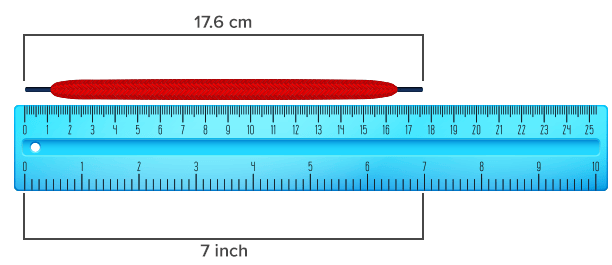Change into kilometres.
Important Points to Remember in Chapter -1 - Measures of Length from Asit Das Gupta Junior Maths 3 Solutions
1. Measuring Length:
(i) The standard unit of length is metre.
(ii) We can measure lengths with the help of a tape or a metre rod or a metre scale.
(iii) In short, a centimetre is written as and the metre is written as and a millimetre is written as .
2. The relationship between the metre and Centimetre:
(i) centimetre millimetres
(ii) metre centimetres
(a) Conversion of Bigger Units into Smaller Units of Length:
(i) To convert into , multiply the number of by .
(ii) To convert into , multiply the number of by .
(b) Conversion of Smaller Units into Bigger Units of Length:
(i) To convert into , divide the number of by .
(ii) To convert into , divide the number of by .
3. Measuring Objects using a Ruler:
A ruler can be defined as a tool or device used to measure the length and draw straight.
To measure the length of an object, place the zero hash mark of the ruler exactly along one end of the object. Align the object you are measuring along the edge of the ruler. Note the hashmark on the ruler along which the other side of the object ends.
Here, the shoelace is long in metric units of length, and inches long in customary units of length.

4. Estimation of length (long/short):
(i) Estimate a quantity or value means you make an approximate judgment or calculation of it.
(ii) Unit of estimation of a length is hand span, steps etc.
(iii) Example: Try to estimate how many steps it will take to go from your school gate to the classroom.
